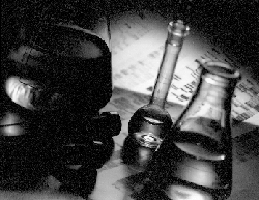The ability for some species to regenerate limbs and other body parts is a fascinating part of nature.
One flatworm, called the planarian, is so good at regeneration that it can be cut up in several pieces and each of those pieces will generate a whole new worm. That regenerative power comes from stem cells that exist all over their bodies. These stem cells can become the cells that are needed for replacing all the missing body parts.
 The dream has been that harnessing the power of stem cells, humans could also have this regenerative power to repair damaged or missing limbs. That dream is one step closer. Scientists have found that stem cells in the nail are key to regenerating missing toes in mice.
The dream has been that harnessing the power of stem cells, humans could also have this regenerative power to repair damaged or missing limbs. That dream is one step closer. Scientists have found that stem cells in the nail are key to regenerating missing toes in mice.
From Discovery News:
Mammals can regenerate the very tips of their fingers and toes after amputation, and now new research shows how stem cells in the nail play a role in that process.
A study in mice, detailed online today (June 12) in the journal Nature, reveals the chemical signal that triggers stem cells to develop into new nail tissue, and also attracts nerves that promote nail and bone regeneration.
The findings suggest nail stem cells could be used to develop new treatments for amputees, the researchers said.
CLICK LIKE IF YOU’RE PRO-LIFE!
In mice and people, regenerating an amputated finger or toe involves regrowing the nail. But whether the amputated portion of the digit can regrow depends on exactly where the amputation occurs: If the stem cells beneath the nail are amputated along with the digit, no regrowth occurs, but if the stem cells remain, regrowth is possible.
The researchers amputated the toes in two groups of mice. One group was given a drug to inhibit the signal for stem cells to grow new nail cells and the other was not. After five weeks the drug-free mice had regrown their missing digit. The mice that had been given the drug had not, indicating that the nail stem cells were critical for regeneration.
If scientists can find a similar mechanism in humans this could be the early beginnings of a treatment for amputees.







